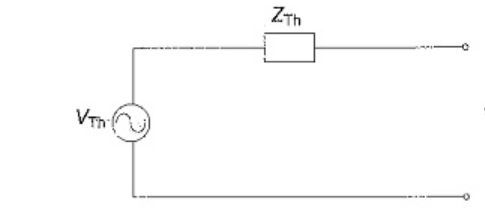I am trying to calculate the Thevenin equivalent circuit of this low pass filter however, I have never done it with an AC input and am getting very confused.
$$R = 100\Omega ; C = 2\mu F$$
$$Vin = 2sin(2\pi*40*t) + 3sin(2\pi*142*t) + sin(2\pi*400*t)$$
Where the Thevenin circuit looks like this:
To find Rth
To find Rth, I have short circuited the voltage source in order to find the equivalent resistance. The resistor R and the capacitor C are in parallel, therefore; $$Rth = R//C = \frac{R}{1+j\omega C}$$
Question: The Rth is in terms of w but the input signal has multiple frequencies, so how do I find the overall Rth?
To find Vth
I have found the transfer function which looks like this: $$\frac{Vout}{Vin} = \frac{1}{1+j\omega RC} = \frac{1}{1+j\omega 100*2*10^{-6}}$$
Question: How do I find the overall Vth when there are three separate sin signals?


